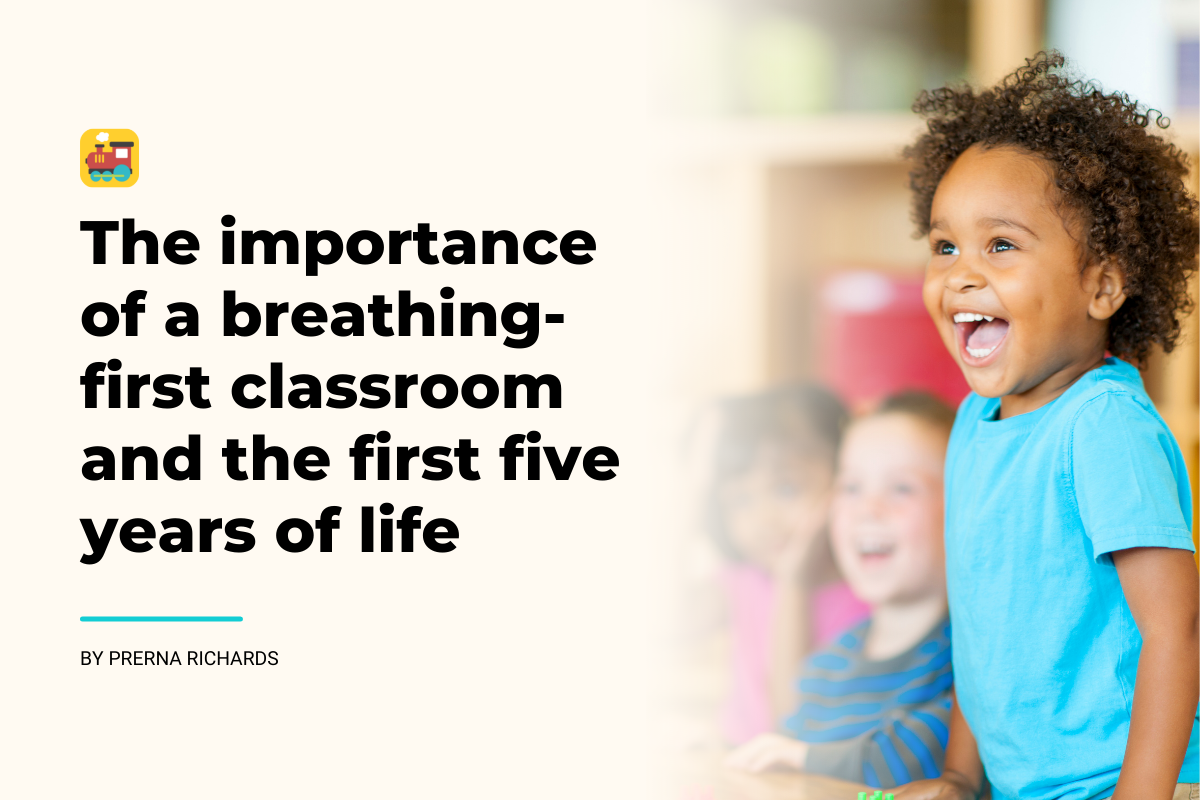In a recent webinar on transforming challenging behaviors, we were joined by Prerna Richards, President, and CEO of Together We Grow! Prerna walked us through five basic needs for children to thrive and the role we play as educators in ensuring these needs are met. She shared strategies on how to engage in intentional positive guidance and responsive interactions with young children, as well as how this approach helps foster relationships built on trust. She also offered advice on how educators can manage stress and feeling overwhelmed in a busy classroom environment.
Having a breathing-first classroom

A breathing-first program is one where adults and children are taking deep breaths throughout the day. Breathing is a proven strategy to reduce challenging behaviors in both frequency and intensity.
Try scheduling two breathing breaks in the morning and two in the afternoon. During each break, everyone takes three deep breaths – educators first and then the children. You can change up the frequency of breaks or the number of breaths, but this is all you need to practice a breathing-first program in the classroom.
Taking deep breaths together can help educators and children reconnect when they’re losing focus. It also reduces stress, improves attention and engages everyone for more listening and learning!
The importance of the first five years of life
The first five years of a child’s life are of utmost importance. 90% of the brain gets wired by the time a child turns five. This is when children’s brains are built, ensuring their best chance in life. During this time, a child’s brain has twice as many neural connections as an adult’s. They must use them or lose them.
Connections that are used regularly and grow strong become permanent. We lose 50% of these connections by the time we are adults as not all of them get used. During this period of time, everyone touches children in a certain way and makes them who they are. As educators, we play a huge role in this. It is so important to nurture young brains, giving them love and attention.
Reducing challenging behaviors
Children have five basic needs that must be met in order for them to thrive:

- To be seen
- To be heard
- To be understood
- To be accepted
- To be loved
Keep these needs in mind when you’re faced with challenging behaviors in your classroom. Remember that trust is key in fostering safe and nurturing relationships between children and adults. To provide intentional positive guidance to children, support them by describing the behavior you are seeing, encouraging them to label their own behaviors and emotions, and asking for clarification when needed.
Challenging behaviors can easily cause stress and feelings of being overwhelmed in the classroom, which is why you also need to prioritize your own self-care. Understand your triggers, have a plan to focus on responding instead of reacting. And remember: Just Breathe!
Watch the webinar that inspired this article!
Want to learn more about important topics in early education such as hiring and retaining educators? Sign up for the next webinar below, it is FREE! Even if you can’t join live, you will be emailed the recording and slides just for registering!


